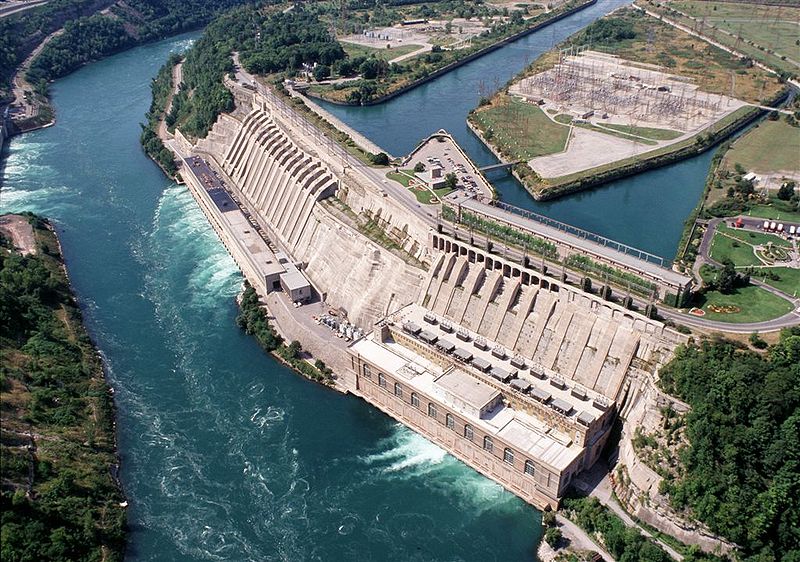 |
| Photo from Wikipedia |
Hydropower is considered by many to be a strong candidate in the fight against climate change. This is notwithstanding the potential social impacts and habitat destruction that is commonly associated with such mega damming projects. Here is an illustration of how a typical hydropower plant works.
Hydropower will likely continue to play a key role in future energy production. A study by Lehner et al (2005) correlated the potential of hydropower plants to produce
electricity to changes in river discharge. Based on findings from their models,
the authors proposed the following scenarios for the 2070s in Europe.
- Scandinavia and northern Russia could see an increase in developed hydropower potential (15–30% and above)
- Portugal and Spain in southwestern Europe, as well as Ukraine, Bulgaria and Turkey in the southeast, could see a decrease of developed hydropower (20–50% and more).
- The United Kingdom and Germany's developed hydropower potential would likely remain stable
There has thus far been a notion that removing trees along streams would increase surface runoff going directly into streams, and thereby benefit hydropower generation. Challenging this notion, New York Times recently reported on a study by Stickler et al (2013) that considered “indirect” rainfall effects resulting from deforestation generation potential for the Belo Monte energy complex under construction on the Xingu River in the eastern Amazon. Deforestation of the Amazon region inhibited rainfall within the Xingu Basin and simulated power generation declined to only 25% of maximum plant output.
Apart from rainfall effects, Simoes and Barros (2007) also
observed that increased temperatures could lead to increased evapotranspiration
rates, which would result in reduced power generation for hydropower plants. In
2001, due to an upward trend in temperature, rainfall fell behind evapotranspiration
rates, and reservoir levels dropped to 20% of total capacity. The situation was
so severe that the federal government announced a national rationing plan to
avoid blackouts.
The authors therefore cautioned that such climatic variability typically do not capture media attention, but the subtle changes over long periods would accumulate and invalidate assumptions on water availability for hydropower stations, thereby affecting electricity generation.
The authors therefore cautioned that such climatic variability typically do not capture media attention, but the subtle changes over long periods would accumulate and invalidate assumptions on water availability for hydropower stations, thereby affecting electricity generation.
Therein lies the irony. Although hydropower is viewed by many as a potential solution to global warming, the viability of hydropower itself is at the mercy of climate change. Relevant stakeholders should therefore consider undertaking more holistic analysis that factor in climate change impacts as part of their environmental impact assessments for future hydropower projects.

I've put the graph and link I mentioned before the lecture today on my blog.
ReplyDeleteIncidentally, Murphy quotes an estimate of solar panels taking 4-5 years to pay back the amount of energy they required for production, as well as a lifespan of 15+ years. Given that the down payment in energy will be taken primarily from fossil fuels, growth in renewables competes with other uses, leading to the paradoxical conclusion that the best time to invest in renewables is when fossil fuels are at their cheapest (and that it gets harder and harder to politically justify investment as prices rise).
That's an interesting perspective. One might also consider that fossil fuels are cheapest probably during periods of poor demand, such as during global economic slowdown. Governments may then be under pressure to be prudent in spending, and investments in renewables could be sidelined. Though if the government subscribes to Keynesian economics, then we might possibly see more spending on such large scale projects.
Delete